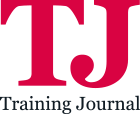Remote work isn’t just a legacy of the pandemic, it’s a powerful way to collaborate when done with intention. Nassia Katroutsou shares how her global teams built trust, accountability and performance through clarity, connection and agile practices, proving remote work can be inclusive, flexible and deeply human at its best.
Working from home is often associated with the COVID era, yet it existed long before that, and it’s here to stay. While nobody doubts the power of meeting people face-to-face and the human need for connection, I have found that remote work can be just as successful, if not more, when it’s done with clarity and intention.
I count myself as one of the lucky professionals who could work from absolutely anywhere as long as I had a laptop and a good, safe Wi-Fi connection. For years, I delivered projects from hotel lobbies, airport lounges, waiting rooms, even coffee shops. Delivering global training and learning projects under such a flexible working schema taught me a valuable skill: how to deliver regardless of the infrastructure around me.
Success in remote work doesn’t come from tools alone
So, when the world shifted to remote work, I didn’t see it as a temporary compromise. On the contrary, I saw it as an opportunity to redesign how teams collaborate. Leading global projects with diverse, scattered teams, I discovered that success in remote work doesn’t come from tools alone. It comes from building trust, accountability, and human connection, even when you’re not in the same room.
Build trust through clarity and consistency
Remote work can easily slide into confusion. To avoid that, we agreed on clear rules: what goes in email, what belongs in chat, what deserves a meeting, and what can be solved with a quick call. We also paid attention to how our emails, chats, and even response times came across. For example, short one-line answers could sound blunt, so we added context. Lacking the in-person body language and tone, we used emojis and quick reactions that helped us show tone and encouragement. A simple “Got it, I’ll come back later” kept the conversation flowing and avoided misunderstandings. This awareness strengthened clarity and trust in our team communication.
We set consistent rhythms: short check-ins, project channels in Teams or Slack, and shared documentation spaces (Dropbox, SharePoint, OneDrive). The point wasn’t to add bureaucracy: we all worked together to create and maintain transparency.
Centralising assets meant that everyone knew where to find information, how to share updates, and the key ingredient for every successful project, what “done” looked like. That clarity bred accountability and strengthened the concept of ownership. If you said you’d deliver, everyone could see it.
Collaboration beyond silos
One danger of working from home is isolation and slipping into silos, each person quietly doing their part alone. We tackled this by deliberately creating opportunities for collaboration.
We split projects into smaller tasks, with some of those tasks designed to be collaborative. We used tools like Miro boards for collective, cross-functional brainstorming, co-designing, storytelling and video scripts, document-sharing for joint drafting, and live working sessions where ideas were exchanged in real time.
These practices cultivated trust. When you build something together, you learn to rely on each other.
See the human behind the colleague
I have been working in one of the most globally spread industries and that meant that my teams were scattered across time zones and cultural backgrounds. To connect as people, we set up monthly online socials. Some were structured, themed activities like online painting, baking, indoor gardening or quiz nights. Others were more informal coffee chats or “lunch and learn” sessions. Anything besides work. We loved those sessions where we got to know the person behind the colleague.
Because people joined from the comfort of their homes, it was more inclusive: introverts, those with social anxiety, or colleagues balancing family responsibilities often felt safer participating in their own way.
Flexibility fuels performance
One of the overlooked benefits of remote work is that people can work in the way that is best for them. Not everyone thrives in an office with constant interruptions and forced proximity.
By giving people the freedom to structure their workdays around when and how they were most productive, I saw them thrive. The balance of structure (clear goals, sprint cycles, collaboration tools) and freedom (flexible hours, autonomy of environment) created a culture where performance came naturally.
Agile for connection and delivery
Implementing agile project management was another game-changer my team. Having frequent new goals delivered by daily sprints, even when they last for just 10 minutes, and regular retrospectives meant we had constant communication without it becoming overwhelming. We used project channels in Teams or in Slack so the discussions were split per project, not just scattered in one general chat room.
Agile gave us short, clear cycles of delivery, where progress was visible and celebrated. That rhythm kept energy high and reinforced accountability. We weren’t just working remotely; we were working together with momentum.
What made remote work successful
Looking back, I can identify the core ingredients that made remote work not only possible but powerful:
- Clear communication: agreed channels, set rules, and transparency
- Shared goals: clear ownership including tasks that encouraged collaboration, not just solo work
- Human connection: social rituals that helped us see each other as people
- Flexibility: allowing people to work where and how they do best
- Continuous feedback: through sprints, retrospectives, and open dialogue
Freedom within structures
Working from home should not be viewed nor experienced as isolating people behind screens. Done right, it’s about giving them the freedom to thrive while creating structures and connections that build trust and accountability.
For my teams, remote work became more than a necessity, it became a catalyst to successful content creation, consistent deliverables and team bonding. A way to connect across borders, embrace diversity, and deliver results without losing sight of the human element.
Because when you make remote work work, you’re not just working from home, you’re working together, everywhere.
Nassia Katroutsou is Head of Education and Training at the Institute of Chartered Shipbrokers




